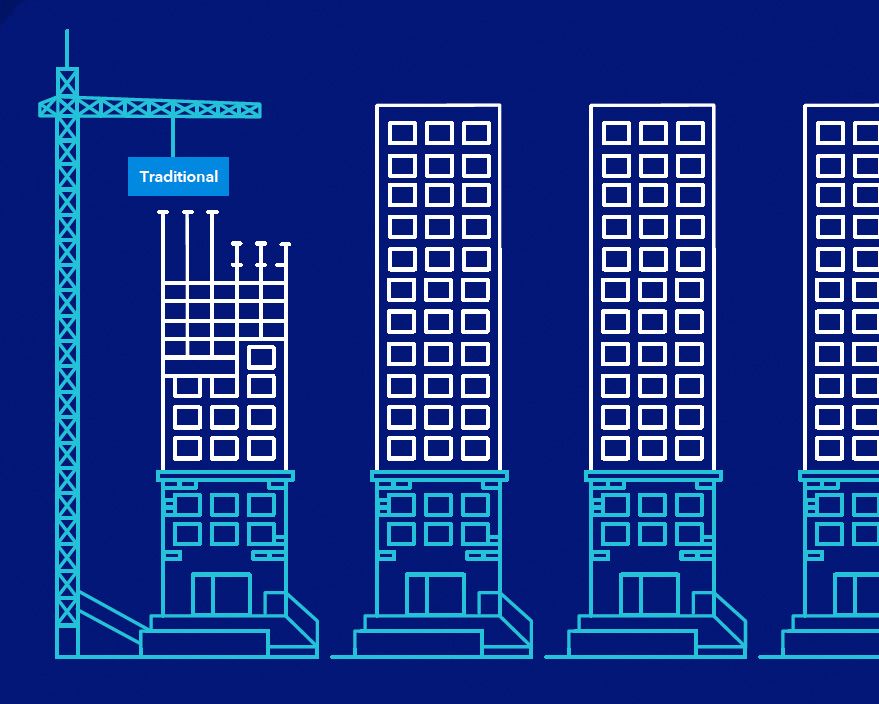In the swirl of these larger trends, there are at least four specific reasons why companies should take stock of their intranet now, evaluate how it compares to their competitors’ and peers’, and determine how large the gaps are between its capabilities and those currently available from vendors.
Reason One: Increasing Pace of Business
The pace at which business is done has increased exponentially since the 1990s. To address this challenge, organizations have begun to push decision-making and action-taking down the organization to line managers and front-line employees. Rather than waiting to be told what to do, employees are now expected to work together to quickly vet new business ideas and opportunities, and to solve operation problems.
However, older intranet technology doesn’t support that operating model. Legacy intranets were designed to help companies create and broadcast top-down communication of decisions and actions. Organizations with older intranets simply can’t use it to support modern work.
Reason Two: The Customer is King
This fact has not changed since the 1990’s and probably not since commerce was first conducted between people. Peter Drucker recognized the supreme importance of the customer when he wrote, in 1954: “There is only one valid definition of a business purpose: to create a customer.”
Today, organizations in every industry are refocusing on their customers. They are listening to what they are saying about existing products and services, as well as seeking their ideas for new ones.
By definition, customers do not directly touch a company’s intranet, but customer-facing employees do. As more decision-making and action-taking is put in the hands of those employees, they must have an intranet that will provide and help them find the information they need to serve their customers. Those employees also must be able to use the intranet as a megaphone with which to communicate the voice of the customer to the rest of the organization, so it understands what its customers need and want.
Reason Three: Aging Intranet Technology is Dead or Dying
The technology that serves as the core of many companies’ intranets is getting long in the tooth. Its vendors have continued to add features, to be sure, but too often these are bolted on in a way that creates more issues than new capabilities. These monolithic intranet offerings are beginning to collapse under their own weight; even their vendors recognize this truth and are beginning to develop newer, more componentized offerings.
These new intranet offerings are increasingly delivered as cloud-based services, rather than deployed on premises as packaged software. This is forcing customers to create hybrid environments, where new cloud-based capabilities are integrated with older, on-premises ones. Customers that don’t want to do that have the choice of staying with their existing intranet, even though it is becoming more outdated by the month, or to completely abandon it in favor of one built on newer technology. Basically, their options are to refresh or to rip and replace.
Reason Four: New Intranet Capabilities Foster Interactivity
The final reason that now is the time for organizations to take a careful look at their existing intranet is because newer technology is available that can help them make it more interactive. By combining the structure of a traditional intranet with the abilities to connect, communicate and work together that are afforded by Enterprise Social Networking software and services, companies can create an interactive intranet.
Now it’s possible to have an intranet that supports the pace and style in which companies must operate to succeed today, not twenty years ago.
Today’s organizations need:
- An intranet through which important information and valuable knowledge flows between individual employees and groups.
- A communication tool that gives everyone in the company—and indirectly, customers—a voice while still supporting top-down communication of important information.
- A network that fosters the exploration of new ideas and helps employees be productive.
Now is the time to re-evaluate your existing intranet, if you aren’t already doing so. You can choose to evolve your current intranet to meet today’s business requirements, or be forced to do so by the supplier of your intranet’s core technology. Don’t get trapped. Be proactive.
GET A PERSONALIZED DEMO
See how Jive works. Request a personalized demo.
See for yourself how Jive can drive productivity and engagement across your organization. Get a free personalized demo.
